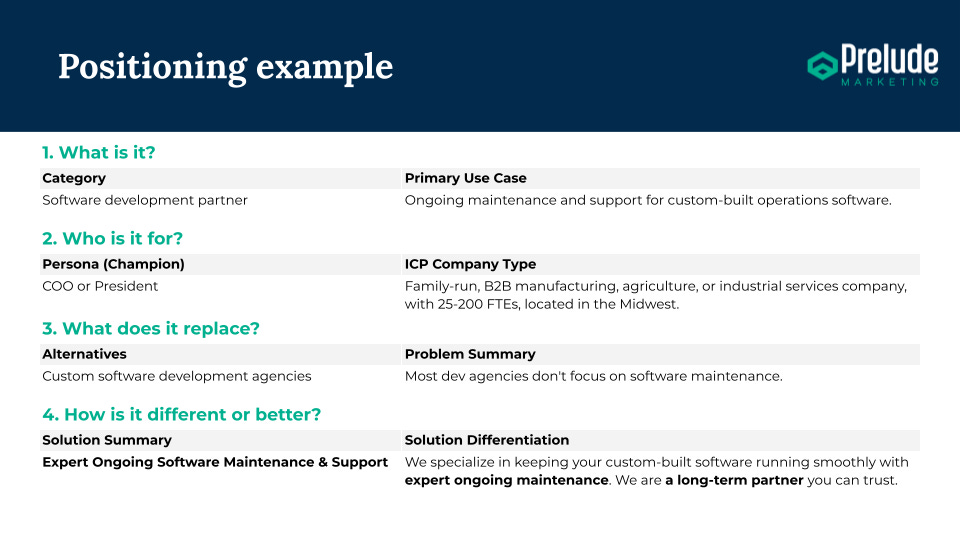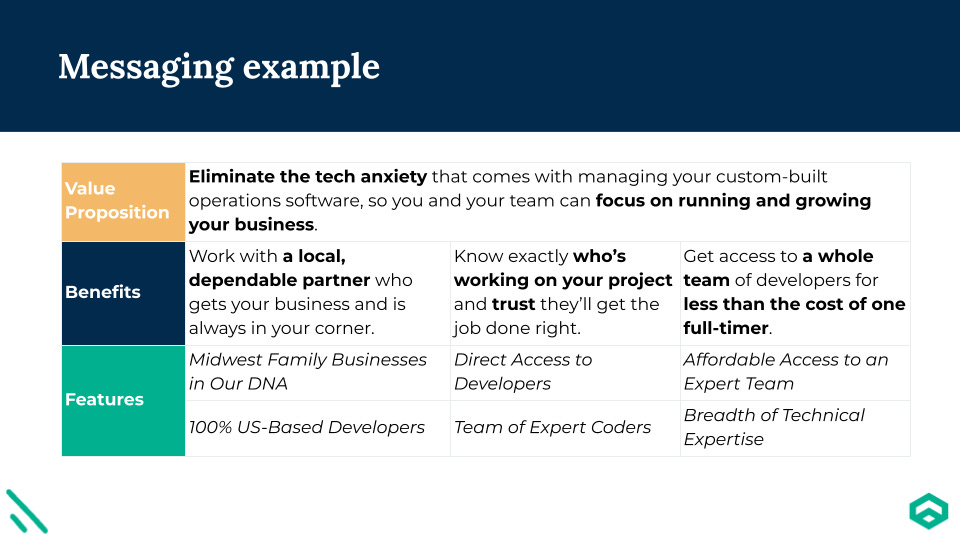Website Messaging Guide: How to Communicate Your Value in 4 Steps
A step-by-step guide to crafting website messaging that resonates with B2B buyers.
When B2B buyers evaluate software solutions, where do they go?
A recent survey by Peep Laja, CEO of Wynter, found that 100% of B2B SaaS marketing leaders visited vendor websites during their buying journey. Given that buyers typically narrow their shortlist to just three companies before requesting demos, your website messaging can make or break your chances of making that shortlist.
Yet most B2B startups struggle to clearly communicate their value on their websites. They fill their pages with technical features, industry jargon, and vague promises that fail to resonate with potential customers.
Through my work with dozens of B2B startups, I've found that effective website messaging comes down to four key elements:
Point of View (POV): Why your solution exists (rooted in the problem you solve)
Positioning: Where you choose to play
Messaging: What you say
Copy: How you say it
In this guide, I'll break down each element and share a practical framework for getting them right. Whether you're writing your website copy from scratch or looking to improve what you have, you'll learn how to craft clear, compelling messaging that helps you make the shortlist more often.
Start with a Strong Point of View (POV)
The best products and services are opinionated. When you think about it, a product is just an opinion on a change needed in the world.
Think about Tesla's stance on sustainable transportation without sacrificing performance or design or Slack's belief that email is broken.
Your POV should clearly articulate:
What problem (or pain) inspired your solution
Why the "old way" of solving the problem is flawed
Why the world deserves a "new way" to solve the problem
A helpful way to develop a strong POV (rooted in the problem you solve) is to use these frameworks:
The 5 Ws Framework
What is the problem? (With data/proof points)
Who has this problem or is affected by it?
When does this problem occur, and how often?
Where does this problem happen?
Why is it a problem? Why does it matter?
The Personification Framework
I am [Who with three characteristics]
I am trying to [Outcome or Job-to-be-Done]
But [Problem/Barrier]
Because [Root Cause]
Which makes me feel [Emotion]
Define Your Strategic Positioning
Once you have a clear POV, you need to stake out your strategic market position. Positioning is about focus and sacrifice––you can't be everything to everyone.
Your positioning should address these four key questions:
What is it? (Category & Primary Use Case)
Who is it for? (ICP & Buyer Personas)
What does it replace? (Alternatives & Problems)
How is it different/better? (Solution & Differentiation)
For example, here's what positioning looks like for a software development agency I worked with:
Messaging: Translate Features into Benefits & Value Props
With your positioning defined, the next step is developing clear messaging that resonates with your target audience. The key is translating your features (what your solution has/does) into benefits (what customers can do) and value propositions (big wins customers achieve).
Here's a simple framework:
Feature: Something special your solution has or can do
Benefit: Something new your customer can do, be, or feel thanks to your feature
Value Proposition: A big win your customers can achieve with your solution
The formula I recommend is: 1 value proposition + 3 benefits + supporting features
Here’s an example:
Write Clear, Converting Copy
With your messaging framework in place, the final step is translating it all into clear copy that converts. Here are a few tips:
Avoid jargon - Say it like your customer would to a friend at a BBQ
Corporate-speak (leverage, synergy, bandwidth)
Buzzwords (transform, revolutionize, supercharge)
Internal lingo (end-to-end ecosystem, composable automation)
Deep tech talk (augmented analytics, ML-defined data abstraction)
Focus on the Single Most Important Takeaway (SMIT)
If your reader only remembers one thing, is that it?
Is it as short as it can and should be?
Which is your longest sentence? Could it be shorter?
Look for places to punch up your copy
Evoke emotion and reflect real pains/desires
Try unexpected words ("Awesomeness")
Use rhyming, repetition, alliteration
Paint a picture (sometimes longer is better)
Drop some parentheses (it feels more personal)
Put It All Together on Your Homepage
Your homepage is the perfect place to see your POV, positioning, messaging, and copy come together. At a minimum, it should clearly answer your four positioning questions:
What is it?
Who is it for?
What does it replace?
How is it different/better?
The key sections to include on your homepage are:
Hero: Briefly summarize What is it? (Category), Who is it for? (ICP), Why should they care? (Value prop)
POV: Show you understand the problem
Value, Benefits, & Features: Present your solution and differentiated value
Social Proof: Build trust and reinforce messaging
Final CTA: Drive action
Below is a simple wireframe that shows you how each of these sections might come together:
Want to Go Deeper?
I recommend checking out these excellent books on messaging and positioning (where I learned many of these ideas shared in this post):
Taking Action: Test Your Own Website Messaging
Take 5 minutes now to examine your website through the lens of this framework. For each element, ask yourself these questions:
Point of View (POV)
Does your website clearly articulate why your solution needs to exist?
Can prospects understand what problem you're solving and why traditional approaches fall short?
Positioning
Could a visitor answer "What is it?" and “Who is it for?” within 5 seconds?
Is it crystal clear who your solution is (and isn't) for?
Do you explain what makes you different from alternatives?
Messaging
Have you translated your features into clear benefits?
Is there a compelling value proposition that ties everything together?
Are you supporting claims with specific proof points?
Copy
Are you using your customers' language, not internal jargon?
Does each page have a clear single most important takeaway (SMIT)?
Are your calls to action clear and compelling?
Identify your two weakest areas, then use the frameworks in this guide to make improvements. Remember: Your website isn't just a digital brochure—it's a mirror reflecting your entire GTM strategy. What does yours reveal?
Want Help Strengthening Your Website Messaging?
I help B2B startups strengthen their go-to-market foundations through consulting and workshops. Here are three ways I can help:
Website Messaging Audit: Get a detailed review of your current website messaging with specific recommendations for improvement
Messaging Workshop: Work with your team to develop clear positioning and messaging that resonates with your target customers
Custom Support: Need something else? Let me know what you're working on
Reply to this email or reach out to me if I can help. I'd love to help you craft website messaging that converts.







